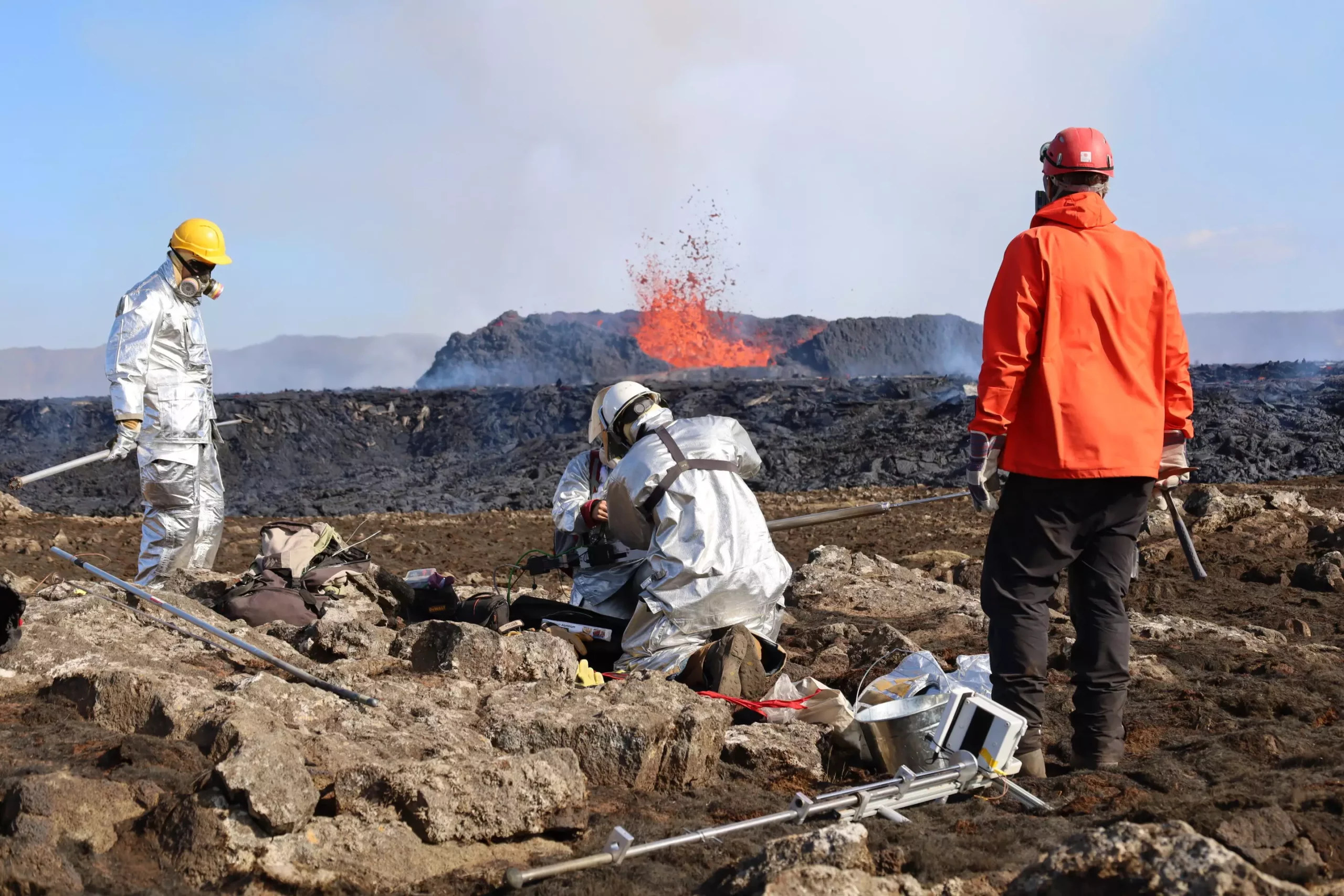Iceland’s Reykjanes Peninsula is currently experiencing a series of volcanic eruptions that have been ongoing since 2021. What is particularly concerning is that this region, which is home to 70% of the country’s population, has been dormant for 800 years. The recent eruptions have forced the evacuation of residents and visitors, causing economic disruption and leaving communities uncertain of their future. The prediction of researchers is that these eruptions may continue for years to decades, possibly even centuries.
An international team of scientists from various research institutions has been closely monitoring the volcanic activity on the Reykjanes Peninsula over the past three years. By analyzing seismic tomography imaging and lava samples, they have gained insights into the geological processes behind the renewed volcanism. The findings of this research have been published in a paper in the journal Terra Nova, shedding light on the potential duration and impact of the ongoing eruptions.
While scientists have identified the origin of the Reykjanes Peninsula’s eruptions as plate movement, the specifics of the magma storage and plumbing systems remain unknown. The peninsula consists of multiple volcanically active sites, raising questions about the existence of shared magma sources or independent ones. Through the analysis of geochemical and seismic data, researchers have been able to determine that the initial eruptions from one volcano in the peninsula share a magma storage zone with those from a different volcano to the west. This shared storage zone lies about 5.5 to 7.5 miles below Earth’s crust.
Despite the insights gained from the research, scientists are unable to precisely predict the duration and frequency of the volcanic episodes that Iceland may experience in the coming years. Nature, as emphasized by researcher Ilya Bindeman, is never regular and often presents exceptions and irregularities. While discussions are underway regarding plans to safely drill into the volcanic sites to further understand the geological processes driving the eruptions, the unpredictability of nature remains a significant challenge.
The volcanic activity in Iceland’s Reykjanes Peninsula provides scientists with a unique opportunity to study actively erupting lava fissures in a less volatile and explosive environment compared to other volcanic regions. Bindeman describes this situation as a “natural laboratory,” where researchers can witness and study the massive forces of nature in action. The awe-inspiring yet chilling experience of observing a volcanic eruption serves as a stark reminder of the immense power of nature and our own smallness in comparison.
The ongoing volcanic eruptions in Iceland’s Reykjanes Peninsula present a significant threat to the country’s most densely populated region and vital infrastructure. While researchers have made strides in understanding the geological processes behind the renewed volcanism, the unpredictable nature of these events underscores the need for continued monitoring and research. As Iceland faces the possibility of recurring eruptions lasting years to decades, it is essential for authorities and communities to be prepared for the long-term impacts of this natural phenomenon.


Leave a Reply